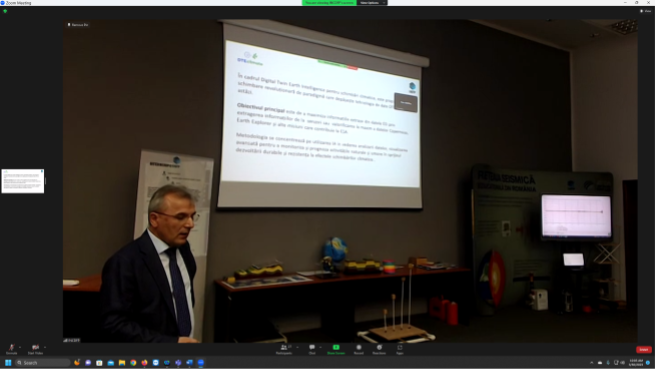





March 30, 2023 | Constantin IONESCU
 Kickoff meeting for the presentation of the REACTIVE project.
Kickoff meeting for the presentation of the REACTIVE project.
Time-dependent multi-hazard parameters will be analyzed at both national and local scales. We plan to use historical data from existing seismic, GNSS, and infrasound networks, while also focusing on key civil and industrial infrastructure sites that are already vulnerable to high seismic risk. These risks may be further exacerbated by extreme weather events, making these sites environmentally hazardous in the event of strong seismic activity.
These critical sites include macro- and micro-nuclear power plants (e.g., ICN Pitești Reactor), cyanide lakes (Roșia Montană), oil refineries (Petromidia Năvodari), and water dams.
We aim to enhance the performance of seismic, GPS, infrasound stations, and marine event monitoring stations in the Black Sea region, improving their response to extreme weather events and fluctuating hydrological cycles.
Furthermore, we plan to integrate the alert information from these monitoring systems into existing Earthquake Early Warning Systems (REWS), providing a foundation for future research on predictive and forecasting models of seismic phenomena amplified by climate change.